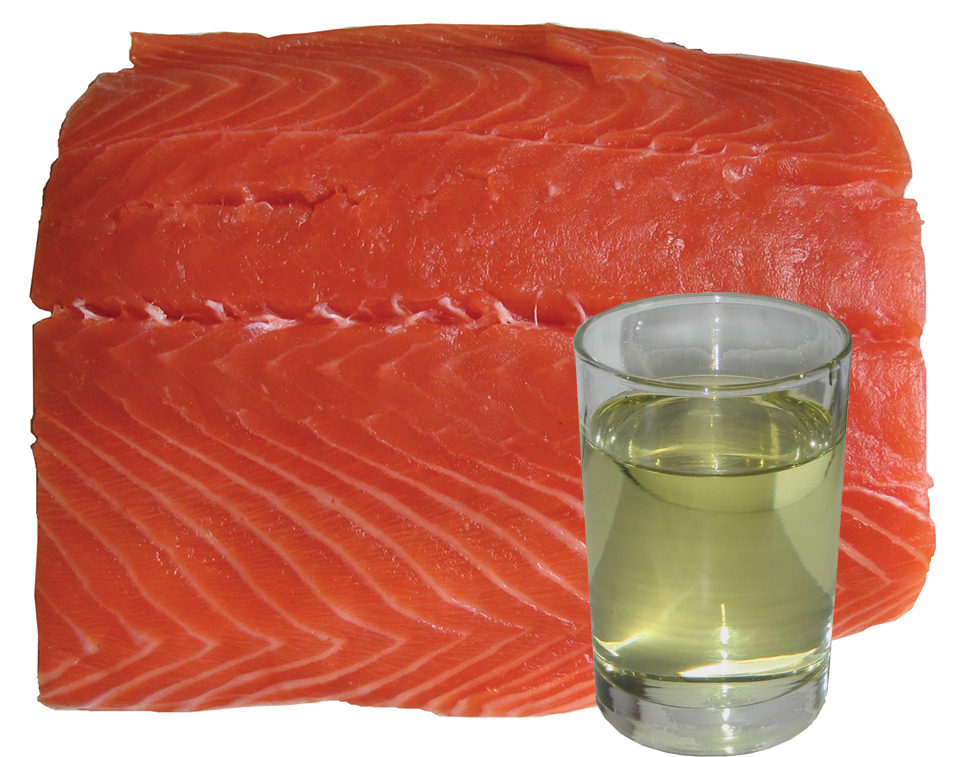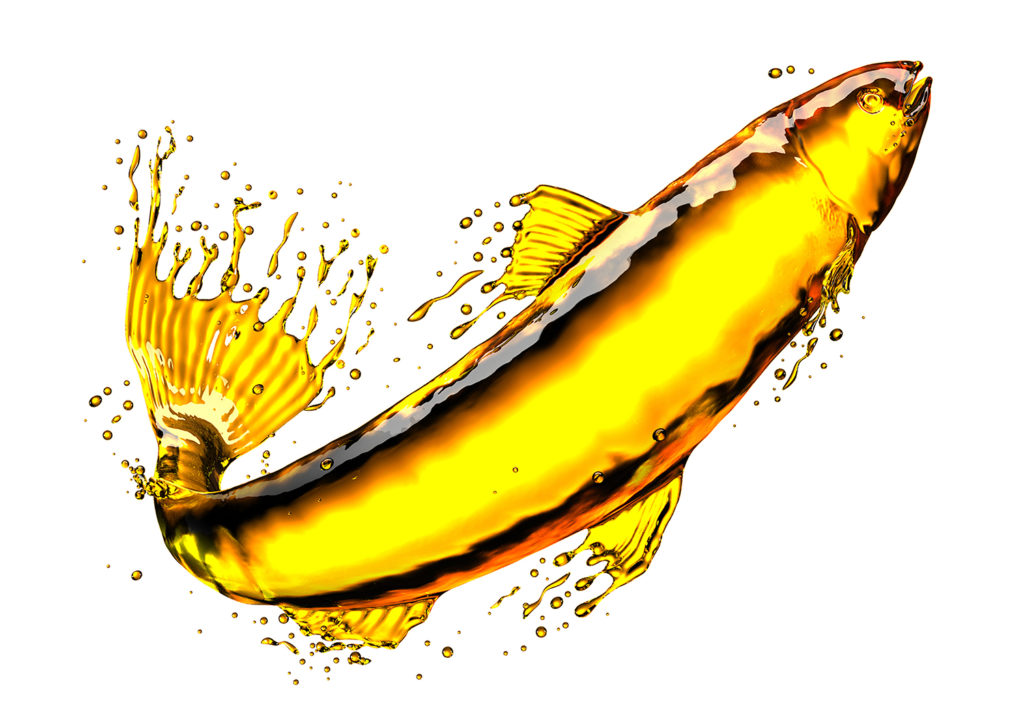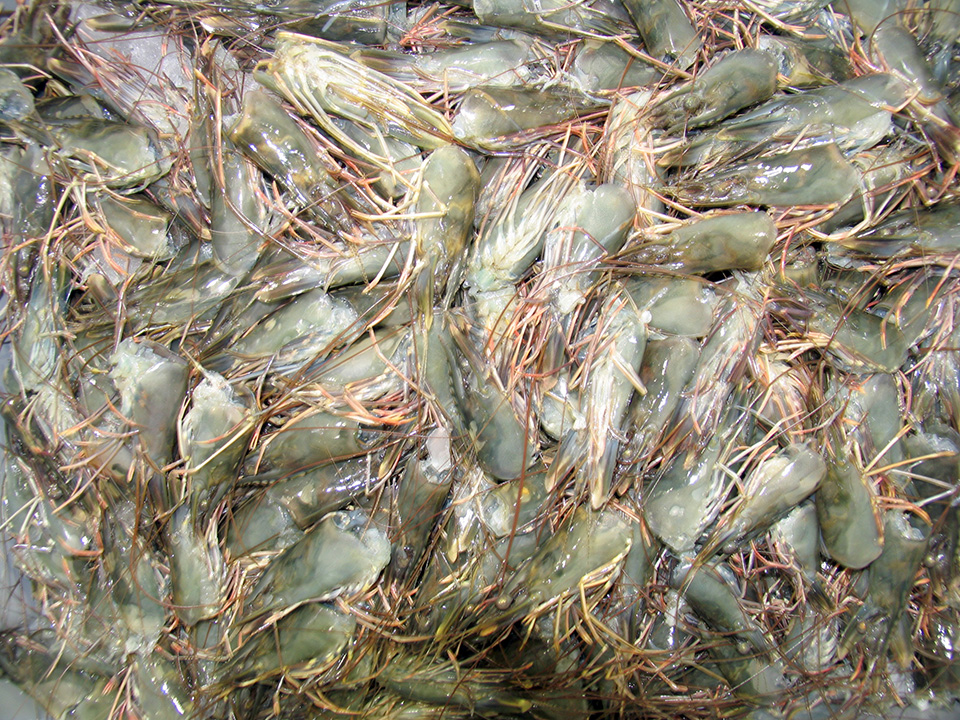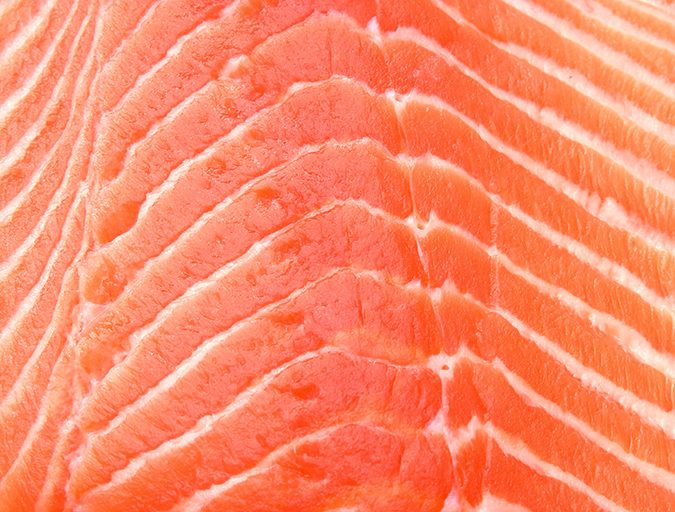Alternative oils significantly alter the nutritional profiles of farmed fish

The annual global production of fishmeal and fish oil averages about 6.5 million metric tons and 130,000 metric tons (MT), respectively, except in years when El Niño events lower landings of anchovies in Peru. The proportion of annual fishmeal and oil production used in aquafeeds has increased from 15 percent and 25 percent in 1994 to 45 percent and 75 percent today.
Replacing marine-based protein and oil with alternative ingredients in aquafeeds is the focus of research around the world. Unlike replacements for fishmeal, however, alternative oils used to replace fish oil significantly alter the nutritional profiles of edible farmed fish products.
Fatty acid profiles
The problem with replacing fish oil with plant oils relates to the old adage “you are what you eat.” Fish oils are excellent sources of omega-3 fatty acids, and fish fed diets containing fish oils deposit high levels of omega-3s in their tissues. In contrast, plant oils made from soy, rapeseed, or corn contain mostly shorter-chain omega-9 and omega-6 fatty acids. Fish fed diets containing these oils have tissue fatty acid profiles with lower levels of omega-3 fatty acids.
Consumers know that eating fish is healthy for them because fish fats are healthy. If the aquaculture industry switches to plant oils in place of fish oil in aquafeeds, consumers will no longer perceive fish as a healthy food. Yet the megatrends in oil supplies make using plant oils in aqua-feeds a necessity, at least during part of the production cycle. The challenge to fish nutritionists is to determine how and when during the production cycle to feed diets containing fish oil to maintain desirable omega-3 fatty acids in fillets.
Deposition rates
Researchers in Norway and Scotland have looked at fatty acid deposition rates in trout and salmon and found that fatty acids are deposited in tissues at a fairly steady rate that follows a dilution model. The model states that fatty acids are deposited in proportion to their levels in the diet as the fish grow. If dietary fatty acid profiles change, the new fatty acids dilute tissue fatty acids already deposited.
To understand how the dilution model works, imagine a trout is fed a diet to which canola oil is added. If the fish is fed the canola oil diet as it grows from 5 g to 500 g, the fatty acid profile of its tissues will resemble that of canola oil (Table 1).
Hardy, Selected fatty acid levels in fish, poultry fat, and plant oils, Table 1
| Source | Palmitic C16:1 | Stearic C18:1 | Oleic C18:1w9 | Linoleic C18:2w6 | Linolenic C18:3w3 | EPA C20:5w3 | DHA C22:6w3 |
|---|
Source | Palmitic C16:1 | Stearic C18:1 | Oleic C18:1w9 | Linoleic C18:2w6 | Linolenic C18:3w3 | EPA C20:5w3 | DHA C22:6w3 |
|---|---|---|---|---|---|---|---|
| Menhaden | 19.0 | 4.0 | 13.0 | 1.0 | 0.3 | 11.0 | 9.0 |
| Poultry | 22.0 | 6.0 | 37.0 | 19.0 | 1.0 | – | – |
| Dehulled flax | 4.3 | 3.3 | 20.4 | 13.1 | 58.1 | – | – |
| Canola | 3.0 | 2.0 | 60.0 | 20.0 | 12.0 | – | – |
| Soybean | 5.0 | 4.0 | 22.0 | 54.0 | 7.0 | – | – |
If the fish is then switched to a diet containing fish oil and fed until it reaches 1,000 g, the final fatty acid profile of the fish will reflect a mixture of what was fed for the first 500 g of weight gain and that which is fed for the second 500-g gain. In fact, if both fish oil and canola oil are added to the diet in equal amounts, and the trout is fed this diet from 5 g until reaching 1,000 g, the final fatty acid content of the trout will be about the same as if canola oil is fed for the first half of the growth and fish oil for the second half.
This situation raises several issues. First, can the parameters of the dilution model be changed such that fish fatty acid deposition in the tissues occurs more rapidly than in the dilution model? It is well known, for example, that fish from areas with temperate or cool water undergo seasonal changes in lipid deposition and maturation. Research to identify the factors that effect these changes may yield information that could be used in fish farming to accelerate fatty acid deposition over baseline rates seen in juvenile fish.
Second, some consensus is needed concerning what value is a desirable level of omega-3 fatty acids in fish, especially salmonids that deposit a significant proportion of storage lipids in muscle tissue. Researchers have shown that omega-3 levels in salmon and trout can be manipulated over a wide range by changing the diets of the fish. Farmed fish can easily be produced with higher levels of omega-3 fatty acids than their wild counterparts.
Should the goal be to mimic the omega-3 levels in wild fish? This could be difficult, given the fact that wild salmon differ greatly in the fatty acid content of their muscle tissue. Different species have different levels, and even within a single species, omega-3 levels vary greatly. Furthermore, wild fish tend to contain less total lipid in muscle than do farmed fish.
Therefore, comparing omega-3 fatty acid levels on a percentage of total lipid basis can lead to false conclusions regarding the healthful omega-3 fatty acid content of fish. Perhaps the way to approach this issue should be to base fish omega-3 levels on the number of grams of omega-3 fatty acids found in each 100-g serving the consumer eats.
New fatty acid sources
Finally, will new sources of omega-3 fatty acids answer the problem of limited and nearly fully utilized marine fish oil sources? Oil from marine algae is now being commercially produced, but at a price that is significantly higher than that for fish or plant oils. Perhaps, with time, commercial production costs will decrease and this source of omega-3 fatty acids will be more economical.
At present, genetically modified oilseeds are not commercially available, but research has demonstrated that oilseeds can be modified to produce the omega-3 fatty acid C18:4, sterodonic acid, which can be elongated by some fish species to long-chain omega-3 fatty acids found in marine lipids. The exciting aspect of this approach is that elongation and desaturation of this fatty acid occurs past the rate-limiting step in the pathway of conversion from C18 fatty acids to longer-chain fatty acids.
Chemical structure of fatty acids
The chemical structures – and potential health benefits – of fatty acids vary significantly among the omega-3, omega-6, and omega-9 classes. Some of these differences are illustrated below.
Omega-3 fatty acids
Omega-3 fatty acids are polyunsaturated fatty acids that are classified as essential because they can not be synthesized in the body and must be obtained from food sources. For human nutrition, important omega-3 fatty acids are α-linolenic acid, eicosapentaenoic acid, and docosahexaenoic acid.

Omega-6 fatty acids
Omega-6 fatty acids are polyunsaturated fatty acids with important biological effects that are significantly mediated by their interactions with the omega-3 fatty acids. The optimal ratio is thought to be 4 omega-3:1 omega-6 or lower. Some important omega-6s are arachidonic acid, linoleic acid, gamma-linolenic acid, and eicosadienoic acid.

Omega-9 fatty acids
Unlike omega-3 and omega-6 fatty acids, the omega-9 unsaturated fatty acids are not classed as essential because they can be produced in the human body from unsaturated fats. Two commercially important ones are oleic acid and erucic acid.

(Editor’s Note: This article was originally published in the November/December 2006 print edition of the Global Aquaculture Advocate.)
Now that you've reached the end of the article ...
… please consider supporting GSA’s mission to advance responsible seafood practices through education, advocacy and third-party assurances. The Advocate aims to document the evolution of responsible seafood practices and share the expansive knowledge of our vast network of contributors.
By becoming a Global Seafood Alliance member, you’re ensuring that all of the pre-competitive work we do through member benefits, resources and events can continue. Individual membership costs just $50 a year.
Not a GSA member? Join us.
Author
-
Dr. Ronald W. Hardy
Director, Aquaculture Research Institute
University of Idaho
3059F National Fish Hatchery Road
Hagerman, Idaho 83332 USA
Tagged With
Related Posts

Aquafeeds
After testing new feed ingredients, Thai Union finds reluctant uptake
The company has engaged in feed trials with both algae and microbial meals, before its sustainability director said farmers, “by and large, don’t want it.”

Aquafeeds
Fish oil alternatives are waiting in the wings
The Future of Fish Feed (F3) initiative aims to jumpstart innovation in terms of viable fish-free substitutes to fish oil through the global F3 Fish Oil Challenge.

Intelligence
Byproduct utilization for increased profitability, part 4
Protein hydrolysates can be produced by acid, base or enzymatic hydrolysis processes. Acid hydrolysis produces salt that makes the product unsuitable for food and destroys some essential amino acids. An optimum process for one fish or shellfish by-product may not be optimum for another.

Intelligence
Wanted: More omega-3s. But from where?
Cargill and Australia’s Nuseed are both investing large sums of money in the development of a genetically modified canola oil rich in DHA. Meanwhile, a leading nutritionist casts doubts on the necessity of omega-3s from fish.


